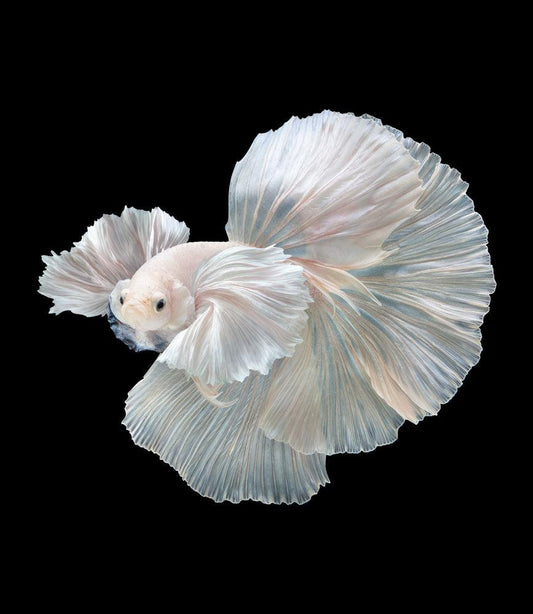Betta Fish Treatment: Essential Tips for a Healthy and Pleased Family Pet
Betta Fish Treatment: Essential Tips for a Healthy and Pleased Family Pet
Blog Article
Exactly How to Breed Betta Fish Efficiently: Professional Strategies and Insights for Hobbyists Aiming To Expand Their Betta Collection
Reproducing Betta fish calls for a nuanced understanding of genetics and environmental problems, making it essential for hobbyists to approach the procedure with both persistance and care. Producing an optimum breeding atmosphere, picking the best sets, and observing the intricacies of their courtship habits are fundamental steps that can considerably affect the end result.
Understanding Betta Fish Genetics
Understanding the genes of Betta fish is essential for effective reproduction, as it influences attributes such as color, fin shape, and behavior. Betta fish exhibit a diverse variety of shades and patterns, largely identified by their genetic makeup.
In enhancement to pigmentation, fin morphology is another considerable element of Betta genes (betta fish). The form and dimension of fins are influenced by numerous genes, consisting of those that figure out whether the fins are brief, long, or veil-shaped. Comprehending these genetic variants aids breeders anticipate the phenotypic outcomes of their offspring
Furthermore, behavioral characteristics such as aggression and territoriality can additionally be influenced by genetics. These habits play a crucial duty in the reproducing process, as they can affect generating success and the total personality of the resulting fry. By adequately understanding these hereditary concepts, breeders can make enlightened choices, eventually improving their reproduction programs and accomplishing preferable results.
Preparing the Breeding Environment
Developing an optimal breeding setting is vital for the successful recreation of Betta fish. The initial step in preparing this atmosphere is to pick an appropriate breeding container, ideally ranging from 5 to 10 gallons.
Following, take into consideration using a sponge filter or an air rock to provide gentle water flow without developing solid currents that can stress the fish. It is necessary to mount plants or breeding cones to provide concealing places and advertise convenience for the female during the spawning process. Drifting plants, such as Java moss or water sprite, can additionally develop a more native environment while promoting bubble nest structure by the man.
Before introducing the breeding pairs, make sure the water is conditioned and devoid of hazardous chemicals, such as chlorine or heavy steels. betta fish. Normal water changes ought to be performed to preserve optimal water quality, enhancing the chances of successful reproduction. With these prep work in area, the reproducing setting will certainly sustain the health and wellness and wellness of both Betta fish
Choosing Breeding Pairs
Selecting the best breeding pairs is important for accomplishing effective Betta fish recreation. When selecting your breeding pairs, consider several essential factors including health, temperament, and genetics. Healthy Betta fish exhibit vibrant colors, clear eyes, and energetic actions. Selecting fish that are free from condition guarantees a better chance of producing viable spawn.
Temperament is another vital factor to consider, as Betta fish are understood for their hostile nature. It is a good idea to pick a man and lady that display compatible personalities to decrease anxiety during the breeding process. A calm man can urge a smoother courtship, while a lady that is as well aggressive might interfere with the procedure.
Hereditary background likewise plays a substantial function in the high quality of the offspring. Reproducing fish that are genetically varied can reduce the helpful resources danger of hereditary wellness concerns and boost the total vigor of the fry. It is helpful to investigate the lineage of both the male and female, concentrating on preferable qualities such as fin type, color patterns, and dimension.
The Reproduction Refine
The breeding process of Betta fish calls for cautious planning and attention to detail to ensure an effective outcome. It is crucial to prepare a suitable reproduction tank, ideally a 5-10 gallon aquarium with a temperature preserved at 78-80 ° F. The storage tank needs to be furnished with a heating unit, filter (ideally sponge type to prevent strong currents), and lots of aquatic plants for the female to hide.
Once the atmosphere is established, introduce the selected reproducing pair to the container, enabling them to acclimate. Observe their habits; the man will certainly present fancy courtship rituals, including flaring his fins and developing a bubble nest. If the woman shows rate of interest, she will display upright red stripes showing preparedness for spawning.
When the lady is receptive, the set will certainly engage in a breeding accept, during which the male feeds the eggs. Preserving optimum water problems during this period is essential for the growth of healthy Betta fry.
Taking Care Of Betta Fry

Feeding Betta fry is important, as they call for a diet regimen high in protein. Originally, they can be fed infusoria or fluid fry food, transitioning to finely crushed high-grade pellets as they grow. Feed small parts numerous times a day to urge healthy and balanced growth without overloading the storage tank with leftover food.

As they read this post here mature, check their growth closely and divide any kind of aggressive individuals to stop damage. By supplying a nurturing environment and proper nourishment, enthusiasts can successfully raise Betta fry into dynamic, healthy check my site fish, ultimately boosting their breeding undertakings.
Conclusion
Effective Betta fish reproduction calls for meticulous interest to genetic selection, environmental conditions, and treatment for the fry. By understanding the genetics of Betta fish and preparing a proper reproduction setting, enthusiasts can boost the chances of producing dynamic, healthy children.
Report this page